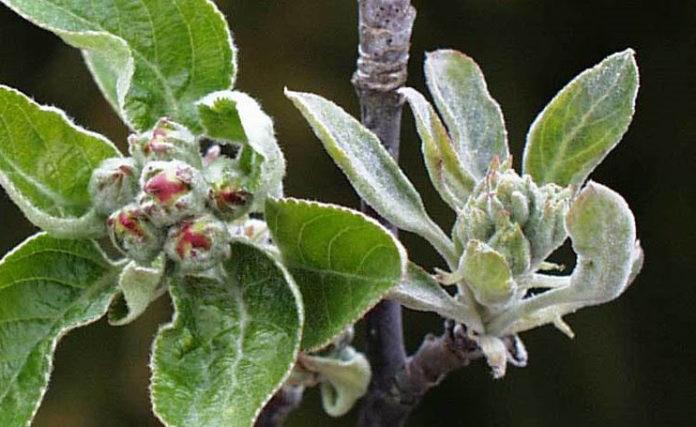Disease prediction model used by Teagasc, in top fruit, suggests there is high disease pressure from powdery mildew at the moment. Below is an update for 2018 on the powdery mildew advice from previous e-bulletins.
Powdery Mildew (Erysiphe, Podosphaera etc.) can be recognised by white or off-white fungal growth usually on the upper surface of leaves but can also be found on stems, flowers, and lower leaf surfaces. It affects a wide range of plants including; Acer, Aster, Crataegus, Malus, Salvia, Spirea, Phlox, Rosa, and Prunus.
Culture
Good growing conditions that reduce humidity, adequate plant spacing and ventilation in glasshouse/polytunnels, will help to prevent powdery mildew developing. AQ 10 a biopesticide may be useful as a protectant especially in protected environments. In soft fruit production silicone via fertigation systems has been seen to reduce the susceptibility of strawberries to Podospharea aphanis.
Control
Where powdery mildew is present in a crop some knock down will be required. Potassium bicarbonate (e.g. K50) is useful in protected environments. Good coverage is essential so a wetter may help.
New in 2017 was protectant Talius and there were excellent reports from growers of its effectiveness.
These chemical options (including their FRAC code) are eradicant and protectant:
Bellis** 11 + 17, Bumper 3, Signum 7+11, Switch 9+12, Systhane 3 (re registered for 2018), Fielder** M5 + 12, Vareon** 3 +3+ 12 and Vivando U8 .
Suitable protectant fungicide
Fortress 13, Talius** 13.
On roses, additional products, Nimrod 8 and Stroby*11, are available for use as a protectant.
Growers should rotate the mode of action (numbers above) to prevent resistance developing.
* may only be used in protected environment
** only outdoor
all others may be used in both locations.
Frequency
Spray programmes can be as close together as every 7 days depending on disease pressure, weather conditions and product. Always follow the label instructions.
Teagasc nursery stock newsletter May 2018




